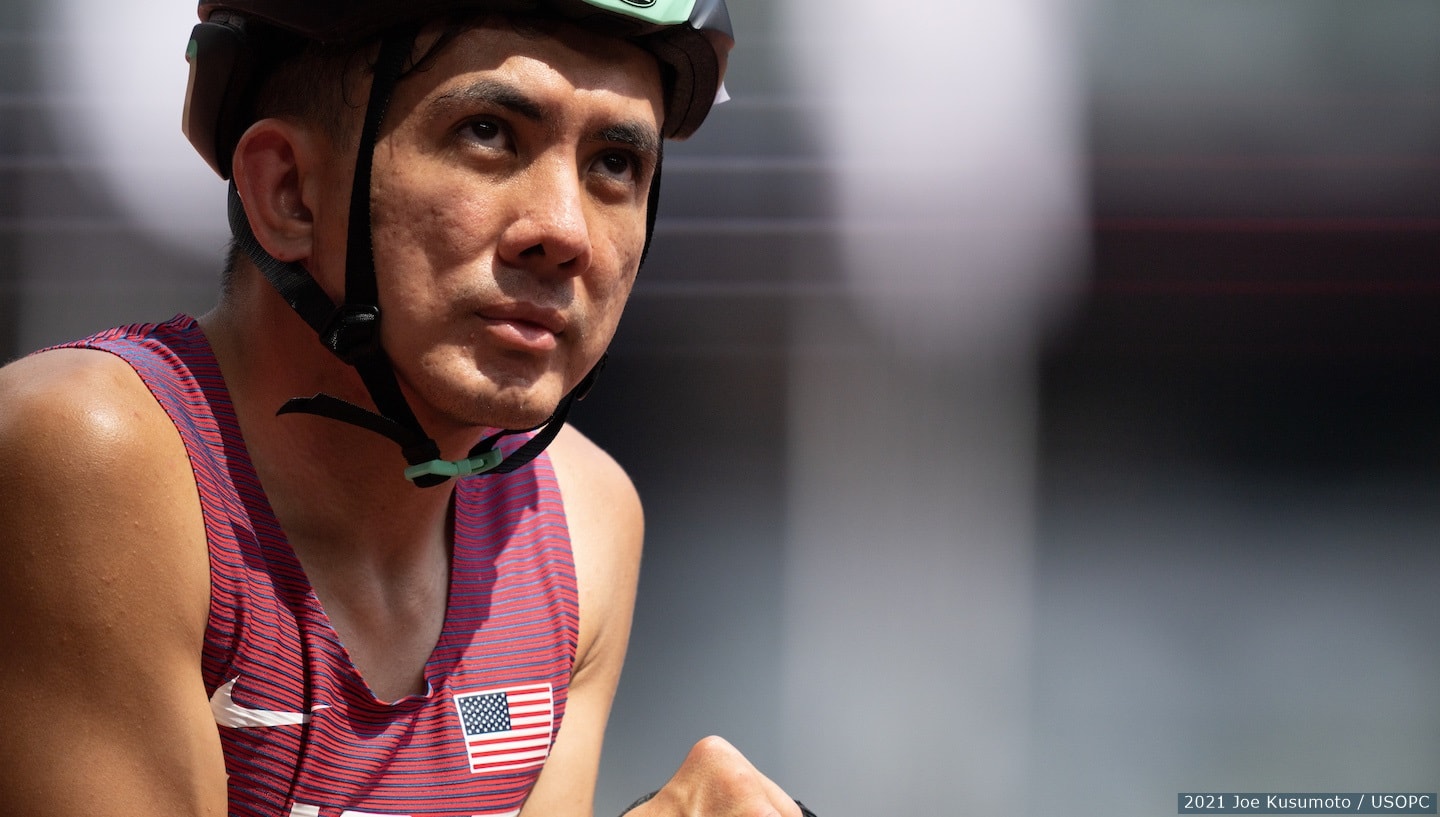
Raymond Martin Still Finds Some Time To Race While Pursuing A Medical Career
by Ryan Wilson

Raymond Martin at the Paralympic Games Tokyo 2020. (Photo: Joe Kusumoto)
While Raymond Martin still hops in his racing chair every now and then, his focus has shifted more toward helping people off the track these days.
The Jersey City, New Jersey, native and three-time Paralympian recently underwent the White Coat Ceremony of Physician Assistant school at Baylor University in Waco, Texas, indicating his transition to clinical rotations.
“In didactics (before rotations), you learn about these rare diseases, which are really interesting and cool,” Martin said. “On rotation, you’re going to see what you are going to see on a day-to-day basis.”
Martin is a year removed from the Paralympic Games Tokyo 2020, and he is diving headfirst into an industry where people with disabilities are few and far between.
A 2018 study done by the Association of American of Medical Colleges and the University of California, San Francisco in showed that only 2.7 percent of medical students self-reported a disability to their institution.
Martin said his interest in medicine started at the age of 8. He would watch medical dramas — which he claims “is a little strange” for a kid that age — and was fascinated by the complexities of the situations.
In 2015, while in undergrad at the University of Illinois he attended a lecture on molecular genetics, and the professor was talking about a rare mutation that causes a person to age an entire lifespan in just a few years.
“It was a really moving lecture,” Martin said. “(The professor) said at the end, ‘Life is fragile and precious. Enjoy it.’ That kind of hit home for me. It was all in that day that I decided that I was going to go into medicine no matter what.”
Martin is working regular hours in his clinical rotations. He will soon move to working in the pediatric emergency room, where there is no regularity to his schedule.
It may make it more challenging to find time to train for track and field, but he is not setting the sport completely to the side. He has a roller in his home and he will push on it when time allows. A roller is similar to a stationary bike and allows Martin to mount his racing chair onto a treadmill and push in place.
Martin is a product of the University of Illinois, home to an official U.S. Paralympic Training Site for wheelchair training.
Since moving to Texas about a year and a half ago, he has found his training to be a little different, especially in the lead up to the Tokyo Paralympics last year.
“Training with the University of Illinois was a really special experience that you just can’t recreate,” Martin said. “I miss all the aspects of it: I miss the training; I miss competitions. I did go to Tokyo, and I got to see everybody. That was really nice.”
Whether he competes in another Paralympics is to be determined, but he’s already put together a career full of success.
Martin, 28, has won a total of 10 Paralympic medals, including seven gold and three silver. On the world championships stage, he’s won 10 golds and 13 total medals.
He competed in Tokyo after a nagging wrist injury that required surgery. The surgery, although a temporary solution, was enough for him to win three medals. Martin competed in one race earlier this year, but racing “is definitely less of a focus for me right now.”
On top of his recent White Coat Ceremony, Martin also has another accomplishment to celebrate. He will soon see himself featured in the next edition of “More Awesome Asian Americans,” which is a children’s book that compiles a collection of stories about notable Asian Americans.
Martin , who is of Filipino decent, will be illustrated alongside names like Olympic snowboarder Chloe Kim, singer-songwriter Bruno Mars, and Peter Tsai, the inventor of the N95 mask, among others.
“There weren’t many Asian role models portrayed in mainstream media while I was growing up,” Martin wrote on an Instagram post about his inclusion in the book. “Asians were often either absent or typecast into roles that ended up being the butt of the joke.
“Books like these can show kids that Asian Americans can not only be more than that, but also can be pretty awesome.”
Ryan Wilson is a freelance contributor to USParaTrackandField.org on behalf of Red Line Editorial, Inc.